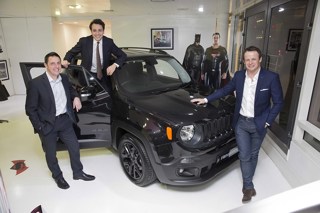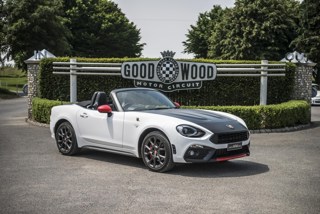Most premium brand manufacturers have been using performance divisions for years – Mercedes and AMG, BMW and Alpina, for instance – but it’s an area that’s starting to appeal to the volume carmakers. Note Vauxhall and VXR.
Every carmaker wants its models to be seen as a sporty drive – consider the millions of pounds ploughed into F1, the British Touring Car Championhips, and soon T1, but what do these performance brands bring to a marque and does the added kudos help dealers to sell standard models?
Historically independent companies modified cars on their own, or sold tuning or styling kits to the end user. Carmakers shied away from going down the performance division route, opting instead to stick with ‘sporty’ versions of their cars. But now they seem to believe it offers anyone an opportunity to tap into a growing market.
The trend can be traced back to the proliferation of badges in the 1980s, spawned by the original Gran Turismo. Monikers like SRi, GTE, GSi and XRi were intended to create a sporty image for certain models. The problem with many of these badges is that they tended to walk a middle path between the standard model and its high performance potential.
More often than not a sport version of a standard car just meant some bigger alloys, a spoiler and maybe some side skirts, together with interior styling changes – white dials always being a favourite. But this just serves to dilute any performance pretensions the badge might have had: it simply becomes another trim level in the model line-up. The manufacturers are now starting a new trend, which involves introducing tuned versions of their vehicles, with tweaked engines and suspensions, rather than merely styling changes.
They may not be truly modified cars in the Max Power sense, but the VMs are definitely following the trend for big engines, big exhausts and even bigger wheels.
Performance brands fall into two main categories: manufacturer-backed, such as Mercedes’ AMG and Ford’s RallyeSport (RS), and independent tuning companies such as Alpina and Brabus.
Vauxhall’s decision to launch VXR as a performance division, rather than simply another badge, shows that the manufacturer wants to be taken seriously when it comes to performance cars. Currently, the VXR badge is on two models only, the VXR220 and the new Monaro, a modified version from Vauxhall’s Australian cousin Holden.
According to Peter Cooke, KPMG professor of automotive management at Nottingham Business School, this shows something of a renaissance in the performance car sector. “A few years ago many people predicted that convertibles would die off, but now they are selling again. I think the same thing is now happening in performance cars,” he says.
“For both dealers and the manufacturers, performance models are an attractive proposition as the unit profit is much higher than the standard run-of-the-mill models.”
Vauxhall’s strategy is to build the reputation and awareness of the brand with its two performance cars and then roll it out to most cars within the range in two to three years.
There are 75 VXR220 dealers in the UK and 19 also stock Monaro. As standard Vauxhall dealers there is no real difference in the showrooms other than VXR literature and accessories, but importantly each has a dedicated VXR salesperson. So is it profitable for Vauxhall dealers to sell VXR models?
“VXR is not primarily about profit. It’s about getting people into the showrooms and interested in the brand and Vauxhall cars. However it does also carry a certain ‘cachet’ for those retailers,” says Stuart Harris, brand manager for VXR.
Aftersales is a big opportunity as only VXR220 dealers provide service and repair and, similarly, only Monaro dealers for VXR Monaro. There will also eventually be a range of accessories and products. Vauxhall is hoping that the interest generated by VXR will encourage more customers into showrooms who might not consider one of the high performance models, but could still opt for one once seen– the image by association effect.
“VXR has been created to get more people interested and excited by the brand. It aims to interact with customers at a more dynamic level and to prove that Vauxhall is serious about building performance cars. There is a halo effect so those customers who do not go for a VXR version will instead choose a ‘softer’ option such as an SRi or SXi,” says Harris.
Vauxhall does have competition from independent tuning companies, such as Irmscher, which specialises in Opel and the Griffin badge, but the company says VXR is more than merely a tuning brand: it’s an important part of the longer term strategy of increasing sales across the model range.
“Primarily a performance division brings people into the showrooms, ultimately what the dealer wants. It is early days for the sales of VXR models, but these dealers are reporting a healthy level of interest,” adds Harris.
It’s vital for manufacturers to get it right, otherwise they risk wasting substantial sums of money.
Prof Cooke says: “If you look at the direction the vehicle manufacturers are moving in, they increasingly want to offer a full range, and this includes performance versions. It’s important they get these models right as it gives them a massive opportunity to retain customers, which is obviously very important.”
AMG has one of the best reputations for producing high quality and performance tuned production cars. The Mercedes-Benz division has been a great success in the UK. In 1995, the first full year of official models, 161 units were sold. In 2003, 1,409 registrations suggest that the idea of owning high performance cars appeals to more people than ever before. The most popular model last year was the SL55 AMG Roadster, which sold 558 units. But with Mercedes-Benz already such a prestige brand, does AMG help sell the standard cars?
“The AMG association does filter down to standard Mercedes-Benz models,” says Rob Halloway of Mercedes-Benz. “Dealers offer a whole range of AMG styling accessories, such as alloy wheels, and these are very popular. People may not opt for a complete AMG version, but they are still keen to get the look on their standard cars.”
AMG models are available through all 170 retailers in the Mercedes-Benz network and, as officially endorsed products, they carry the same warranty and have the same servicing periods as standard models. The increasing consumer demand for cars that combine high performance along with good quality and reliability has been good news for AMG .
“The cars offer accessible performance combined with practicality. They are easy to drive and easy to live with, but also offer great performance. The styling is discreet and the look is more purposeful and powerful rather than showy,” says Halloway.
Dedicated independent performance companies such as Alpina have a long history of working with particular manufacturers and producing tuned and re-styled conversions of standard cars – at a cost of course. But real enthusiasts are prepared to pay this premium, which is where dealers can take advantage.
Alpina is a manufacturer, not just a tuning house. Sytner is the UK concession holder and has been the sole agent since 1983. Models are sold exclusively through eight of its BMW dealerships which have some Alpina branding.
The awareness of the Alpina badge is at an all-time high among consumers in the UK, and yet it appears that the majority of BMW dealers are not grasping this opportunity.
“For most dealers it’s simply not on their agenda to sell Alpina models. We are willing to sell the cars to any BMW dealer who is interested but most seem to be scared of the unknown and don’t know where to start,” says Nick Godfrey, sales manager for Alpina GB.
“Customers will go into their local BMW dealership to ask about an Alpina, and although a few dealers will refer the customer to us, many will instead simply offer them an M Sport model. We do have good relationships with some dealers. If a dealer contacts us and wants to sell an Alpina car we are the first people to help them out. But these relationships often run out of steam.”
This may be due to the small volumes involved: Alpina sold 180 cars in the UK last year. But there is a more significant effect on the BMW badge, which dealers appear to be missing, according to Godfrey. “There is definitely a halo effect that filters down to the standard models.
The relationship between Alpina and BMW is very close – we’re not merely an aftermarket tuning company. We help to promote BMW’s standard models through good press about our own Alpina cars,” he says.
It’s clear there is an opportunity for dealers. The volumes may be small, but the evidence suggests that having performance cars in a showroom promotes sales of standard models, as well as attracting customers who want something extra and are willing to pay a premium.

















Login to comment
Comments
No comments have been made yet.